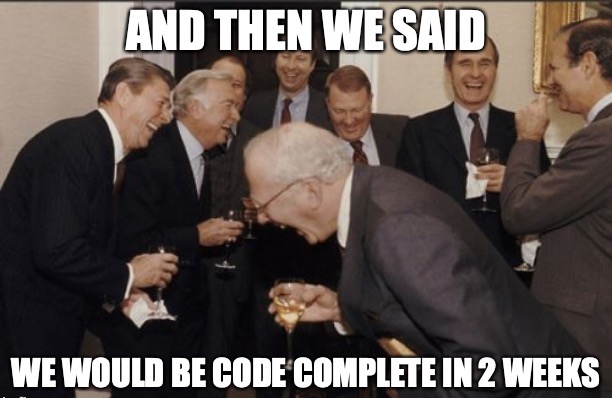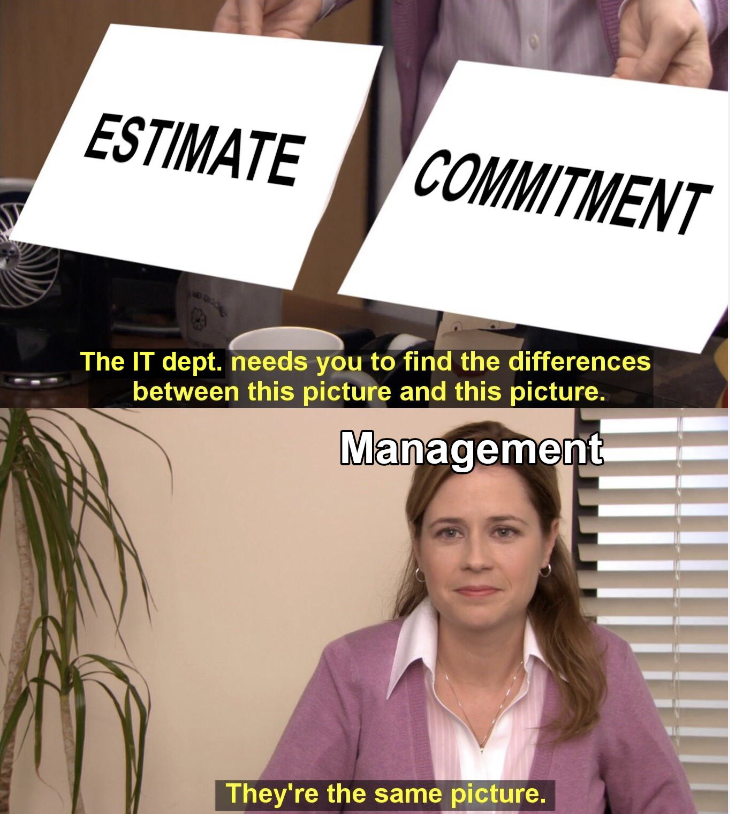When looking for time estimation methods for a project, you ask yourself How can you accurately determine the length of a project? How can you avoid overestimating the time required? How can you manage your project schedule more effectively? Time estimation is a necessary step for successful project management and completion. So, if you’re looking for ways to accurately estimate the time required for your project, this article is for you.
In the world of project management, accurately estimating the time needed for a project is a difficult but necessary task. According to recent surveys, 78% of project managers need help estimating project time. In addition, a study by the US Project Management Institute underscores the need for accurate time estimation because projects that are delivered late or on time can hurt the bottom line.
In this article, we’ll share our project manager Erik Kalmykov’s tips for accurately estimating how much time a project will take. We’ll also show you how to avoid common mistakes and manage project timelines more effectively. You’ll also learn how to manage project deadlines and avoid common mistakes.
What is Time Estimation?
Time estimation is the process of determining how long a project will take to complete. It is an essential part of project management and can help project managers better plan, manage, and complete projects on time. An accurate time estimate allows project managers to plan for potential risks or delays, and to better estimate the resources and people needed to complete the project.


Why are time estimates important? Time estimates are important for several reasons. First, by providing a better understanding of the resources and manpower required to complete the project, project managers can better plan and manage projects. It also allows project managers to identify potential risks and delays and make plans to deal with them. Finally, accurate time forecasting enables project managers to better plan for the people and resources needed to complete the project, which helps them manage project budgets more effectively.
Types of Time Estimation
Expert Judgment

Leveraging the knowledge of others in an area where you lack experience is simply innovative business. We can’t all be experts in everything. When it comes to time estimating, there are additional benefits to using the expertise and knowledge of an expert to help you develop your estimates, because the expert you contact is likely to have helpful advice for the project as a whole and may be able to identify problems that have plagued similar projects in the past. Having a professional help you develop more accurate and reliable estimates can help you achieve your goals more efficiently and cost-effectively. By leveraging the expertise of an experienced individual, you can ensure that your goals are met on time and within budget.
Pros & Cons of Expert Judgment
- Pros: The method enables the consideration of certain elements that cannot be taken into account by an automated analysis.
- Cons: This strategy necessitates individual judgment. As a result, the outcome frequently exhibits bias.
Usage
Expert judgment is constructive for managers who lack knowledge and is most appropriate for large projects where quantitative estimation alone is not sufficient.
Analogous / Comparative

It is possible to estimate how long it will take to complete a task or project by comparing it to similar ones. This approach focuses on “analogical” or “comparative” reasoning to make an estimate based on knowledge and experience.
Pros & Cons of Analogous / Comparative Estimation
- Pros: Comparative / Analogous estimation is one of the quickest and easiest methods for estimating resources.
- Cons: It has a poor track record of accuracy and has a significant danger of incorrect results.
Usage
This method is particularly useful for standard projects with similar task requirements. It is often used in the early stages of a project to get a rough idea of the number of resources needed.
Parametric

A parametric time estimate is a technique that uses a predetermined formula to determine how long an activity or project will take to complete. This formula often requires the input of certain criteria, such as the number of people assigned to the work or project, the complexity of the task or project, and/or the skill level of the people involved.
Pros & Cons of Parametric Estimation
- Pros: This method is reasonably accurate since it considers the complexity of the work or project as well as the skill level of the persons involved.
- Cons: The parameters’ values may not always be accurately determined using this procedure, which takes longer than other methods. It also disregards any adjustments to materials, methods, or technology that can impact how long it takes to finish a task or project.
Usage
Parametric time estimation works best on projects with standardized work packages and repetitive activities. Therefore, it works best in less inventive industries where project parameters are relatively easy to estimate early in the planning phase.
Top-down

The top-down methodology of project estimation is based on breaking down project activities into large blocks, projecting how long they will take to complete, and aggregating the estimates. As managers acquire more information in the later stages of project planning, these generic, large blocks of project work can be broken down into smaller pieces and then estimated independently to provide more accurate forecasts.
Pros & Cons of Top-down Estimation
- Pros: As it takes into account the difficulty of the work or project and the expertise of the persons involved, this method of estimating may be rather accurate.
- Cons: It might be challenging to precisely divide the activity or project into manageable portions using this methodology, which takes more time than other approaches. The time needed to accomplish the activity or project is also not adjusted for advancements in technology, business practices, or material availability.
Usage
In project planning, when quick results are important, the top-down project estimation approach is widely used. It is most useful in the early stages of project planning when a rough and quick estimate is needed.
Bottom-up

Bottom-up estimating is a method of determining the price and time required to complete a project by breaking it into smaller jobs and estimating each one independently. This method is useful for projects with multiple jobs or components that need to be estimated.
Pros & Cons of Bottom-up Estimation
- Pros: High result accuracy and little differences between resources that were estimated and used.
- Cons: This method takes a lot of time, effort, and skill to master.
Usage
Large software development projects, where multiple activities and components must be estimated independently, are most likely to use bottom-up estimation. Other project categories, such as construction projects or large industrial activities, may also use this strategy.
Three-point

Three-point estimating is a project management method for estimating the time, cost, and resources needed to complete a project. This process uses the idea of “triangulation” to create an optimistic estimate, a pessimistic estimate, and a most likely estimate. The expected value of the project is then calculated from these estimates.
Pros & Cons of Three-point Estimation
- Pros: Compared to most estimating procedures, which tend to concentrate just on one point throughout the computation process, the method is more complete. It is risk-oriented and aids managers in reducing the risk of budget and schedule overruns brought on by unanticipated circumstances.
- Cons: Large volumes of data and careful attention to detail.
Usage
Software development and other large initiatives often use a three-point estimate. The time, effort, and resources required to complete a project or task can also be estimated using this method.
Time Estimation Statistics in Project Management
In project management, time estimation statistics are used to assess schedule accuracy. They provide statistics on how close a project was to being completed on time. Time estimation statistics are used to identify areas where the project can be improved, as well as areas where the project schedule was successful and accurate. The number of activities completed on time, the number of tasks delayed, the number of tasks completed ahead of schedule, the time saved due to resource efficiency, and the time added due to unforeseen complications are all examples of time estimation statistics. These statistics can be used to determine if changes need to be made to the project schedule or if additional resources need to be allocated to ensure that the project is completed on time.
Why Are Accurate Time Estimates Crucial to Project Success?
The success of a project depends on accurate time estimates because they give the project manager a better understanding of the time, effort, and resources required to complete the project. In addition, project managers can use them to coordinate with key stakeholders and set realistic goals for their team members. Accurate time estimates can help with resource allocation, on-time task completion, and project budget stability. Knowing how long the project will take to complete can help project managers make better decisions about resource allocation and schedule management. Accurate time estimates also help reduce the risk of project failure by providing a basis for assessing progress and identifying potential problems before they become serious difficulties.
Cost overruns
Cost overruns occur when a project goes over budget. Many factors can cause cost overruns, including poor project management, underestimating the number of resources needed, and unanticipated scope changes. Cost overruns can be problematic for the project team because they can lead to delays or even cancellation of the project. Project managers should continually develop accurate time and cost estimates for their projects, monitor progress, and make changes when necessary to minimize cost overruns. They should also ensure that their staff is well-trained and prepared for any scope adjustments or unexpected issues. Finally, project managers should strive to create a culture of accountability and communication so that issues are identified and addressed before they become major problems.
Tips for Estimating the Time Needed to Implement a Project
- Define your goals and objectives: Consider spending some time defining your aims and objectives before beginning the project estimating process. You may determine what has to be done and how long it should take using this information.
- Break it down: Break your project down into smaller, more achievable activities that may be estimated independently after you have determined the general objectives.
- Gather data: After you have divided your project up into smaller jobs, collect information for each one. This might consist of time estimates, cost estimates, and any other pertinent data that will enable you to estimate the project properly.
- Assess risks: Consider the hazards involved with each activity when you assess them.
- Compare estimates: Compare your estimates to industry norms and the estimates of other experts. This will assist you in ensuring the accuracy of your estimations.
- Keep track of changes: Keep note of any scope or time frame modifications as the project develops and modify your estimations as necessary.
- Get feedback: Ask for feedback from stakeholders and team members throughout the estimation process. This will help ensure that everyone is on the same page and that the estimates are realistic.
Summing Up
A clear understanding of time estimation is essential for successful project management. With the right technique, you can be confident that your estimates are accurate and valuable to you and your team. Time estimation is the ability to accurately predict how long a task will take to complete – using time estimation methods can help you take the guesswork out of your estimates and allow you to have more confidence in your time management and the time frame in which your work can be completed.
Time estimation is a critical component of project management and can make the difference between a successful project and one that is on budget and schedule. With the right plan and methodology, project managers can accurately predict the time required for any project. Using the advice in this article, project managers can develop a time estimation plan that will help them manage their projects more effectively and ensure successful project completion.
Comments